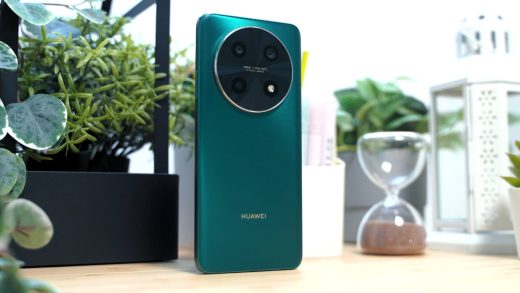Samsung recently launched the most affordable device in its flagship Note 10 lineup, the Galaxy Note 10 Lite. With its price tag of under PHP 30K, we couldn’t help but compare it to another device in the same price range, the Xiaomi Mi Note 10 Pro, launched in the country last December. See how they fare against each other in this specs comparison!

| SAMSUNG GALAXY NOTE 10 LITE | XIAOMI MI NOTE 10 PRO |
|---|---|
| 6.7-inch Full HD+ (2400 x 1080) Super AMOLED Infinity-O display, 394ppi | 6.47-inch curved AMOLED FHD+ 1080 x 2340 resolution, 19.5:9 aspect ratio, 400000:1 contrast ratio, HDR and DCI-P3 wide color gamut |
| Samsung Exynos 9810 (10nm) 2.7GHz octa-core CPU | Qualcomm Snapdragon 730G |
| 8GB RAM | 8GB RAM |
| 128GB storage | 256GB storage |
| Expandable up to 1TB | Non-expandable |
| 12MP F1.7 Dual Pixel, OIS (Main) + 12MP F2.2 (Ultrawide) + 12MP F2.4, OIS (Telephoto) triple-rear cameras | 108MP f/1.69 OIS lens main + 12MP f/2.0 optical + 20MP f/2.2 ultra-wide + 5MP 5x zoom + 2MP macro Penta-rear cameras |
| 32MP F2.2 hole-punch front camera | 32MP front camera |
| 4G LTE | Dual 4G VoLTE |
| Wi-Fi | Wi-Fi |
| Bluetooth | Bluetooth |
| 3.5mm headphone jack | 3.5mm headphone jack |
| S-Pen | -- |
| - On-screen fingerprint sensor - Face unlock - NFC | - In-display fingerprint scanner - Face unlock - NFC support - IR blaster |
| 4,500mAh battery with fast-charging support | 5,260mAh battery with 30W fast-charging support |
| USB Type-C | USB Type-C |
| One UI 2 (Android 10) | MIUI 11 (Android 9 Pie) |
Advantages of each smartphone:
Samsung Galaxy Note 10 Lite:
- Larger display
- Expandable storage
- S-Pen
- Android 10
- Older but capable flagship-grade chipset
Xiaomi Mi Note 10 Pro:
- Larger internal storage
- Five rear cameras
- IR blaster
- Larger battery capacity
When it comes to the display, the Galaxy Note 10 Lite has the larger one, measuring at 6.7-inches, compared to the Mi Note 10 Pro’s 6.47-inches. Both handsets have Super AMOLED panels and an FHD+ resolution, but the Note 10 Lite has a slightly higher pixel resolution at 2400 x 1080, in contrast to the Mi Note 10 Pro’s 2340 x 1080. It’s also worth noting that the Mi Note 10 Pro’s display has curved edges, while the Note 10 Lite has a flat panel. As for the front camera placement, the Mi Note 10 Pro employs a drop notch, while the Note 10 Lite utilizes a hole-punch instead.
As for processors, Samsung equipped the Note 10 Lite with an Exynos 9810 chipset, launched back in 2018. On the other hand, the Mi Note 10 Pro sports a Snapdragon 730G chipset, launched in 2019. While the Exynos 9810 is two years old at this point, it’s still highly capable as it’s a flagship chipset that powered Samsung’s Note 9 series. SD730G, on the other hand, is a mid-range chipset mainly focused on gaming capabilities. Both devices have 8GB of RAM but vary in storage as the Note 10 Lite offer 128GB while the Mi Note 10 Pro has 256GB. Despite having the smaller storage size, the Note 10 Lite can be expanded all the way up to 1TB. Unfortunately, the Mi Note 10 Pro doesn’t have any form of storage expansion.
Camera-wise, the Mi Note 10 is armed with five rear cameras, composed of a 108MP primary, 12MP optical, 20MP ultra-wide, 5MP 5x zoom, and a 2MP macro shooter. When it comes to numbers, the Note 10 Lite’s triple-rear setup made of a 12MP dual-pixel primary, 12MP ultra-wide, and a 12MP telephoto aren’t exactly a match for that. If there’s one thing in the camera department that both devices can level with each other, it’s that they both have a 32MP selfie camera.
As the Note 10 Lite is a member of Samsung’s Galaxy Note series, the smartphone comes with an S-Pen, a stylus that’s also Bluetooth-enabled. The two handsets have a 3.5mm headphone jack, and also have biometrics features such as an in-display fingerprint scanner and face unlock. NFC is also available on the two devices. The Mi Note 10 Pro does have an IR blaster though, which the Note 10 Lite doesn’t have.
Powering up the Note 10 Lite is a 4,500mAh battery with super-fast charging support. The Mi Note 10 Pro edges that out though, with its massive 5,260mAh cell, paired up with 30W fast-charging support. The Note 10 Lite and the Mi Note 10 Pro both have a USB Type-C charging port as well. The latest One UI 2.0 based on Android 10 runs through the Note 10 Lite, while the Mi Note 10 Pro operates on MIUI 11 based on Android 9 Pie.
The Note 10 Lite and the Mi Note 10 Pro are both available for purchase in the Philippines, and the two devices both have the same price tag of PHP 29,990. If you don’t mind the two-year-old yet capable flagship chipset and would like to have a larger display, expandable storage, and a stylus that can be used for a variety of things, cop the Samsung Galaxy Note 10 Lite. If you’re more interested in a mid-range chipset that’s suited for the gaming capabilities of a smartphone, a larger battery capacity, the novelty of five rear cameras, and don’t really mind waiting for the MIUI 11 Android 10 rollout, then the Xiaomi Mi Note 10 Pro might be for you.































